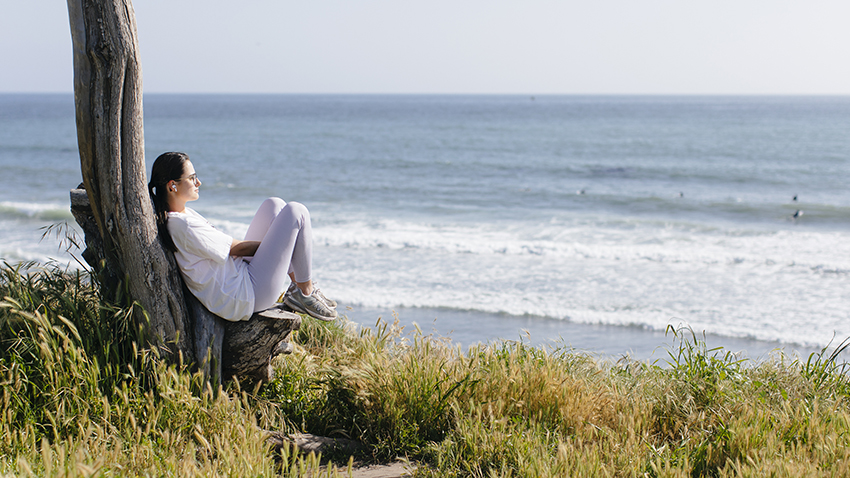Four quick ways to truly rest
Share This Article

By Wynne Parry, UCSF
Deep rest is best achieved in prolonged practices that relax the body and quiet the mind, such as a yoga class or meditation retreat. But you can also combat stress within seconds by activating your parasympathetic nervous system. Here are a few approaches to making this biological shift quickly.
1. Slow your breathing
Entering a state of deep rest requires the mind and body to feel safe. Cues that indicate safety can come from the body itself, most notably through breathing. Slowing your breathing, particularly lengthening your exhalations, calms your mind and body by activating the vagus nerve. “You’re intentionally switching on a state of calm,” notes Alexandra Crosswell, PhD. Even a few deep, slow breaths taken repeatedly throughout the day can help, she says.
2. Please your senses
Stimulating your senses in enjoyable and relaxing ways can also activate your parasympathetic nervous system. Crosswell recommends intentionally triggering your senses by, for example, smelling essential oils, arranging flowers, putting your bare feet in grass or sand, enjoying a view of the horizon, or cooking. These sensory-rich activities can move your focus from your mind to your body, reducing stressful thoughts while easing you into a state of rest, she says.
3. Pay attention to nature
According to the biophilia hypothesis, humans are drawn to natural environments due to having evolved within nature. Studies have shown that the sensory stimulation nature provides can aid recovery from stress. To take advantage of this connection, visit a natural setting, perhaps as close by as your yard, and pay attention to the sights, sounds, and scents. Try touching leaves or petals. Be curious about what you see, touch, feel, smell.
4. Look outside the box
If you want to try a contemplative practice, know you have options beyond yoga and meditation. Less recognized practices include drum circles, prayer, and spiritual reading, such as the Christian practice of Lectio Divina. Crosswell recommends treating the activity as a way to connect with your spiritual life or cultural heritage — or to try something new, since novel experiences are associated with a greater sense of well-being. She says enjoyable pursuits that tap into the senses and require focus, such as knitting, art, or playing music can also lead to deep rest. If you have the luxury of trying a residential meditation retreat, these can offer larger resets for your nervous system, according to Elissa Epel, PhD.
Do you need additional support? Help is available.
Contact your local Faculty and Staff Assistance Program, or review behavioral health benefits through UC health plans.
